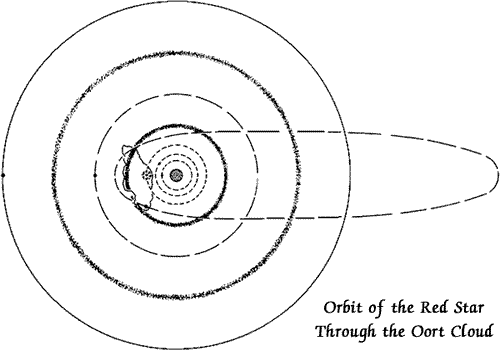
| Разделы | |||||||||||||||||||||
|---|---|---|---|---|---|---|---|---|---|---|---|---|---|---|---|---|---|---|---|---|---|
| @ Иллюстрации и Обложки | |||||||||||||||||||||
@ Книги
| |||||||||||||||||||||
| @ Планета Перн | |||||||||||||||||||||
| @ Драконы и файры | |||||||||||||||||||||
| @ Дельфины | |||||||||||||||||||||
| @ Биология | |||||||||||||||||||||
| @ Общество | |||||||||||||||||||||
| @ Родословные | |||||||||||||||||||||
| @ События | |||||||||||||||||||||
| @ Энциклопедия | |||||||||||||||||||||
| @ Улыбнитесь | |||||||||||||||||||||
| @ Гостевая книга | |||||||||||||||||||||
| last modified
23.01.2005
|
|---|
Всадники Перна. Материалы
The Dragonlovers guide to pern
I. Overview
In the constellation known as Sagittarius the Archer, positioned at -41o right ascendancy 19'25'' two hundred light-years from the Sol system , there is a fourth -magnitude blue-white star designated as alpha Sagittarius. The Arab astronomers who discovered it called it Rukbat Al-Rami, or “the Acher's Knee”. Thought-out Earth's history, it has also been called Al Rami, Ruchbar ur Ranich, Rucba, Rukbah, and Rukbar, all referring to the ancient Arabic tale that gave the constellation its name.
Circling the star Rukbat area five planets, two asteroid belts, a rogue planet on an eccentric orbit captured by the gravity well in recent millennia, and an Oort cloud at the perimeter of the stellar system.
The Oort cloud is composed of smaller particles than expected of such a body, as Oort clouds are usually nebulous collections of stone and ice chunks - comets.
The first and second planet s are too small to sustain human life. The fourth, which has a cluster of little moons, and the fifth planet, a dark world, are too far away from Rukbat for compatible existence; they are separated from the sun and from each other by the two asteroid belts, which significantly cuts down on the sunlight they receive.
On the third planet, among seas of liquid water, heavy volcanic and plate-tectonic activity cause the earliest single land mass tot re-form into thee continents over the last hundred million years. One continent is gigantic, taking up more than half of the available landmass. The second, somewhat smaller and resembling a dragon in flight looking back over its shoulder, is approximately the size of Earth's Eurasian landmass. The last, very small, barren continent is isolated on the other side of the world in the middle of an ocean five thousand miles wide. The planet's diameter is approximately sixty-five hundred miles.
A single revolution around Rukbat takes this world 366 Earth days. (A Pern day is a little over twenty-four hours long; the Pernese count 362 days to their year, with a leap year every sixth year.) The world has an axial tilt of fifteen degrees, giving it distinct seasons and climate belts ranging from snowy at both poles to hot summers at the tropical equator. It remains actively volcanic. New cones form in the sea bed near both large continents and in volcanic sea islands arrayed in long barrier ranges enclosing the two like giant parentheses. The southern continent shows considerable volcanic and tectonic activity. A deep trench, probably a subsidence center, lies in the ocean near the Eastern Barrier Range. The northern is more stable, having basement rock as its pedestal. Two moons revolve around the planet. Timor, the more distant moon, is about the size of Luna, while the closer moon, Belior, is somewhat smaller, so Pern has tides. There is a constant thirty-mile-an-hour head wind, driven by the pattern of tides and thermals from the volcanoes.
The Dragonriders of Pern ® is a registered trademark.


